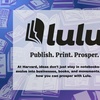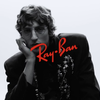Butler, the University's sole spokesman on the strike, said on May 13, "the University does not feel it must pay its employees the same pay as other employees bargain for elsewhere."
He says Harvard's superior fringe benefits must be considered along with wage rates.
The workers say that Harvard's medical plan is superior, but the number of vacations and holidays permitted is less than or equal to the number given by other area employers. Overall, Harvard offers a slightly superior package of fringe benefits, but these do not come close to compensating for a wage deficiency of 20 to 25 per cent, the workers say.
In the case of the printers, Butler says the wages of Harvard printers should be compared to the wages of all printers, not just union printers.
But many non-union printers are either workers who lack enough skill to qualify for a union, or workers who have so much skill that they can command better wages in the open market than the union can negotiate. So, it seems difficult to compare wages for printers of fairly uniform skill levels to wages of non-union printers whose wages and skill levels range from one extreme to the other.
Adopting Butler's suggestion, one finds that real wages of all printing employees in the Boston area have in fact increased by an average of about 12 per cent per cent since 1968 while the real wages of Harvard printers have remained approximately constant during that period. Wages of area GAIU printers outside of Harvard increased about 7 per cent in the same period.
Union officials say that Harvard printers are not only behind other union printers but that they have also fallen behind non-union printers. Paul Golden, vice president of local 300 of the GAIU, said last week that the Harvard printers' wages are about 10 per cent below area rates for non-union workers.
Since the strike began, operations at the Harvard University Printing Office, where all of the striking printers are employed, have come to a virtual standstill. "There is damned little being done at the Printing Office these days," Butler said early last month.
According to Golden, the printing office is managing to handle about 5 to 10 per cent of its normal work load by using supervisory personnel.
Butler said on June 2 that the final examinations were "probably" printed outside the University at a non-union shop.
Golden said in April that it costs Harvard about 33 per cent more to have material printed at commercial shops than in its own normally-operating plant.
Using these figures and the fact that the printing office did about $2 million worth of business last year, Golden estimated the strike is costing Harvard about $12,000 per week in increased printing costs.
In addition, Harvard has hired three Boston policemen to guard the University Printing Office at a weekly cost of about $1500.
Despite costs all around, the workers have been well-financed during the course of the strike.
The GAIU is paying the typesetters 75 per cent of their usual before-tax wages. Since this payment is tax-free, the typesetters' take-home pay during the strike is close to the $110 to $130 per week they were paid when they were working.
Read more in News
Crises Nothing New to Cox












